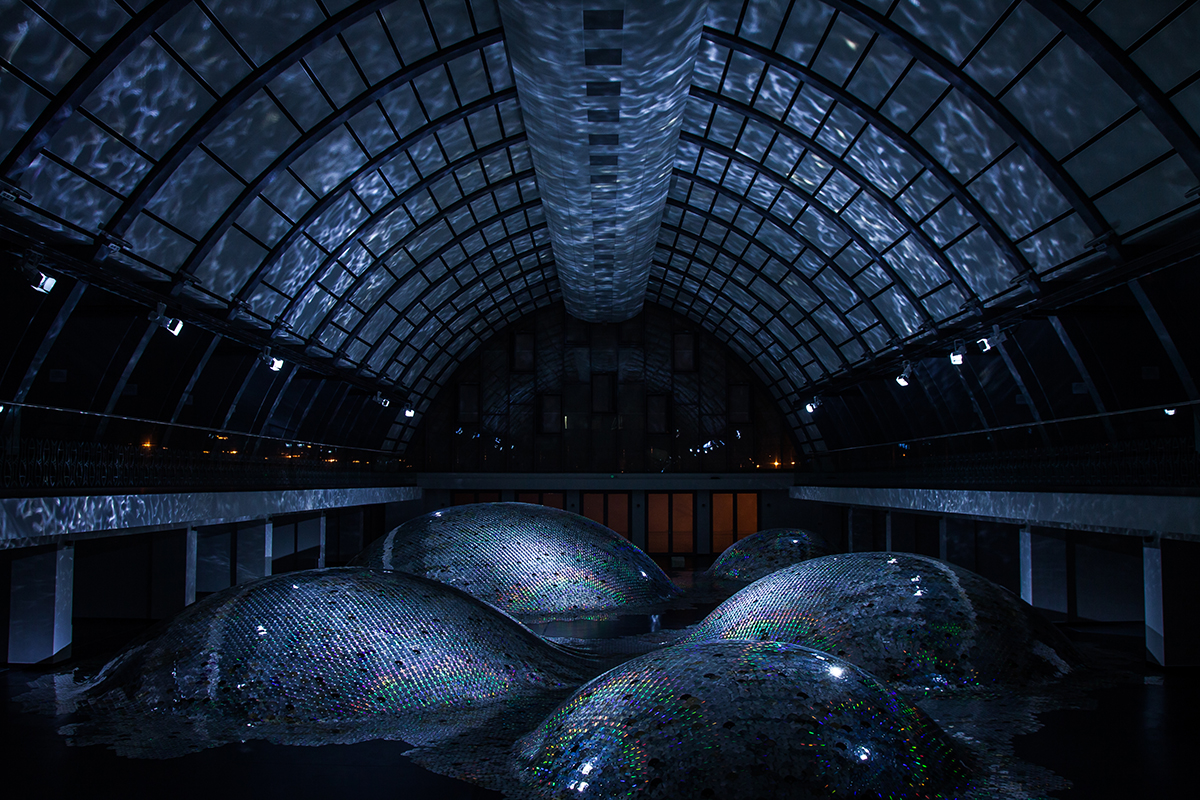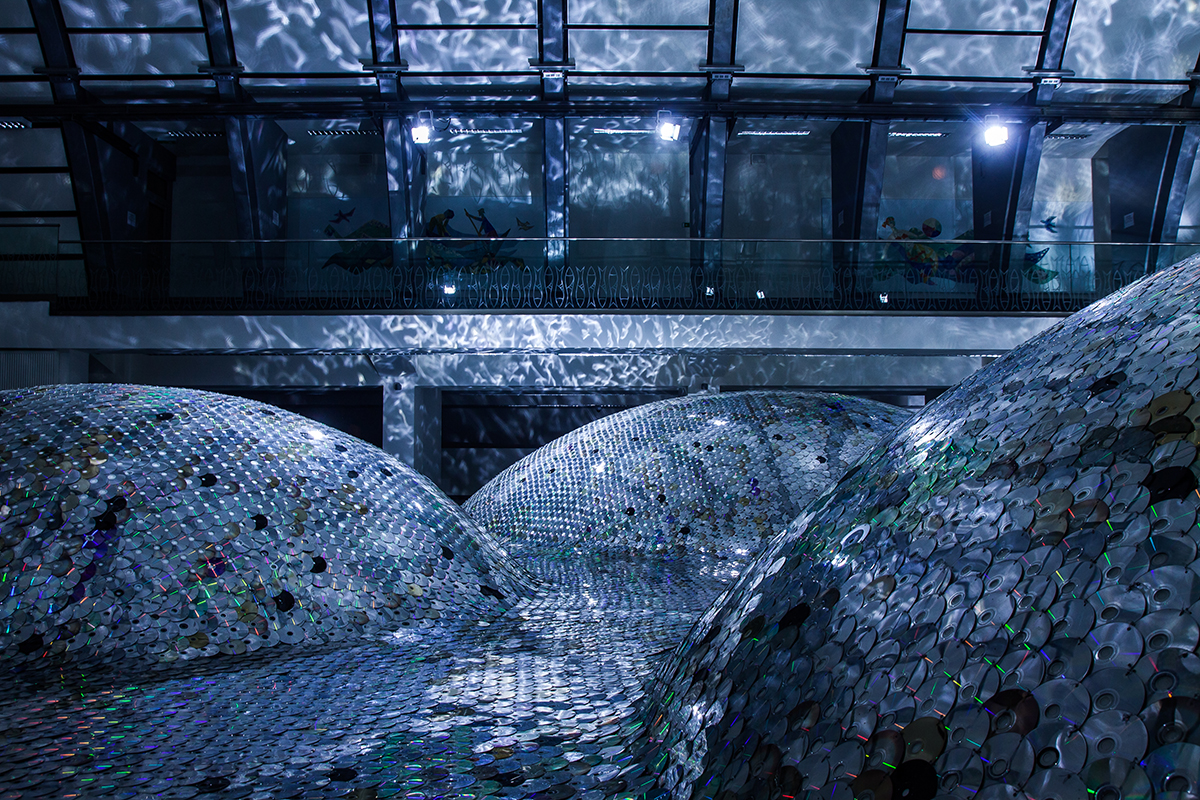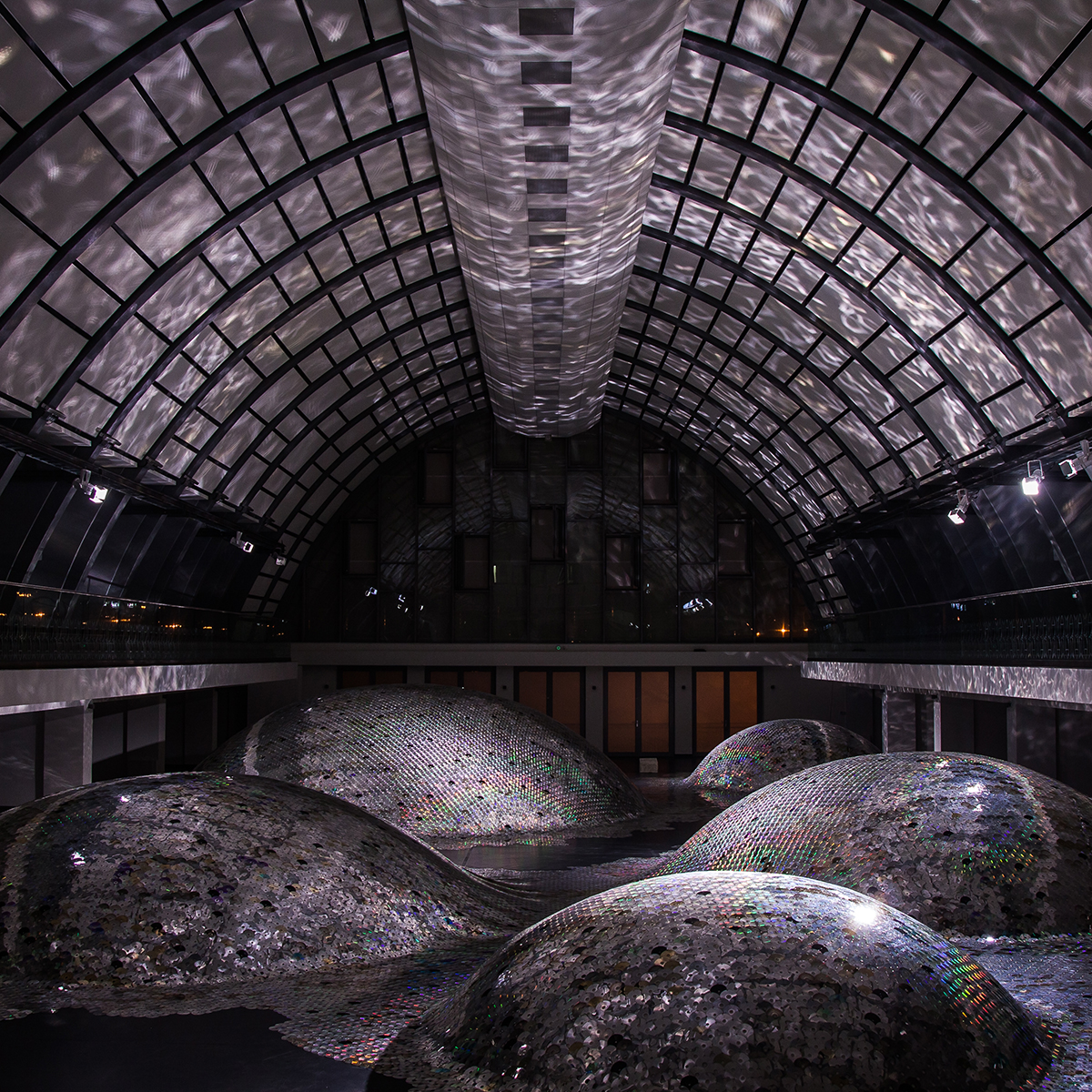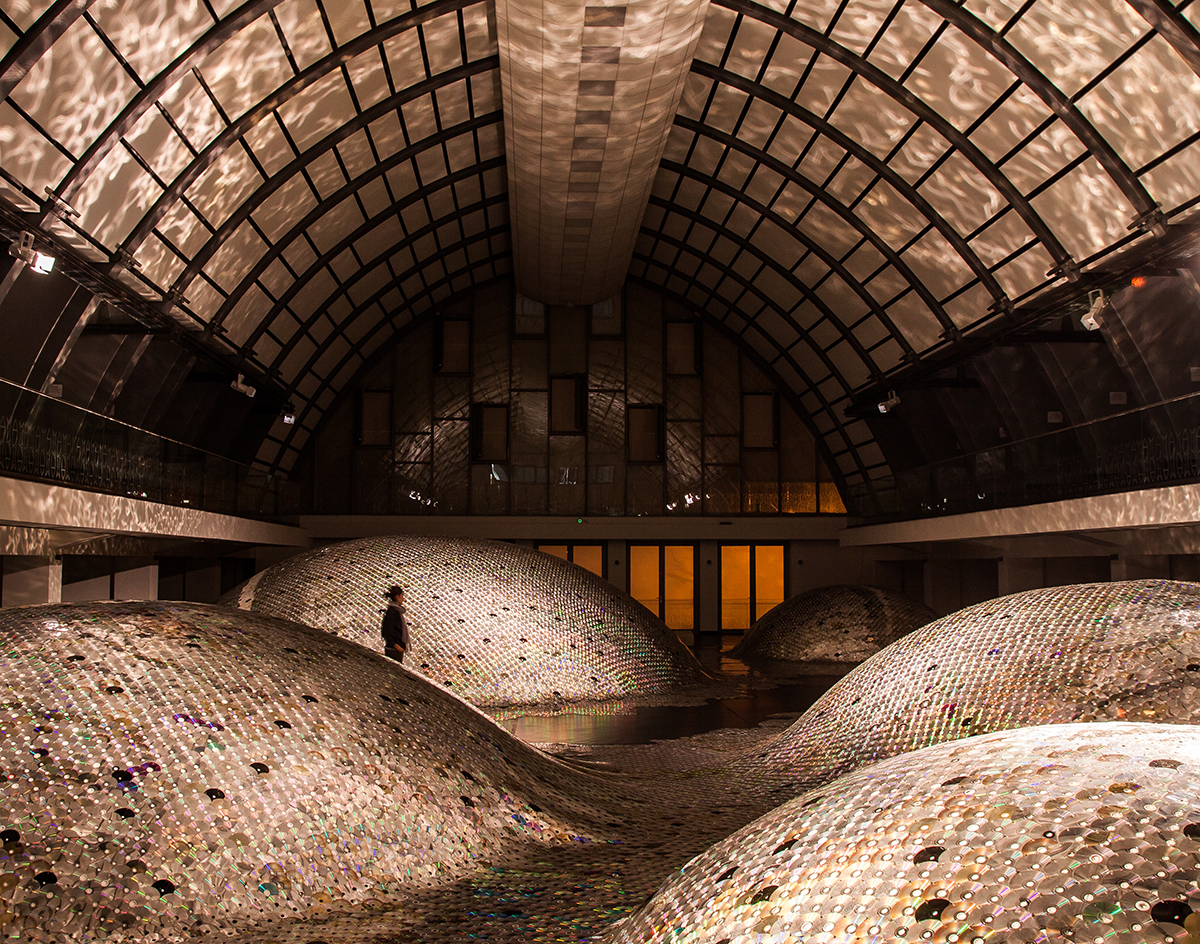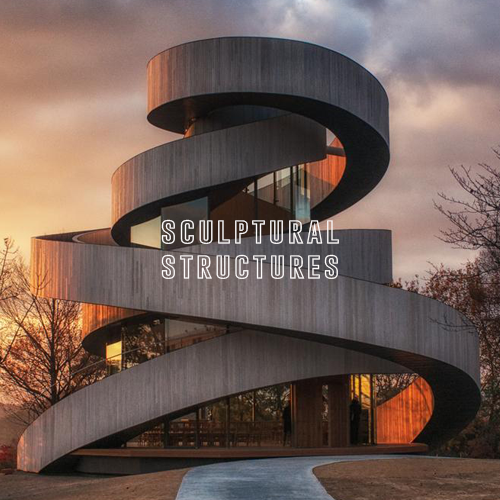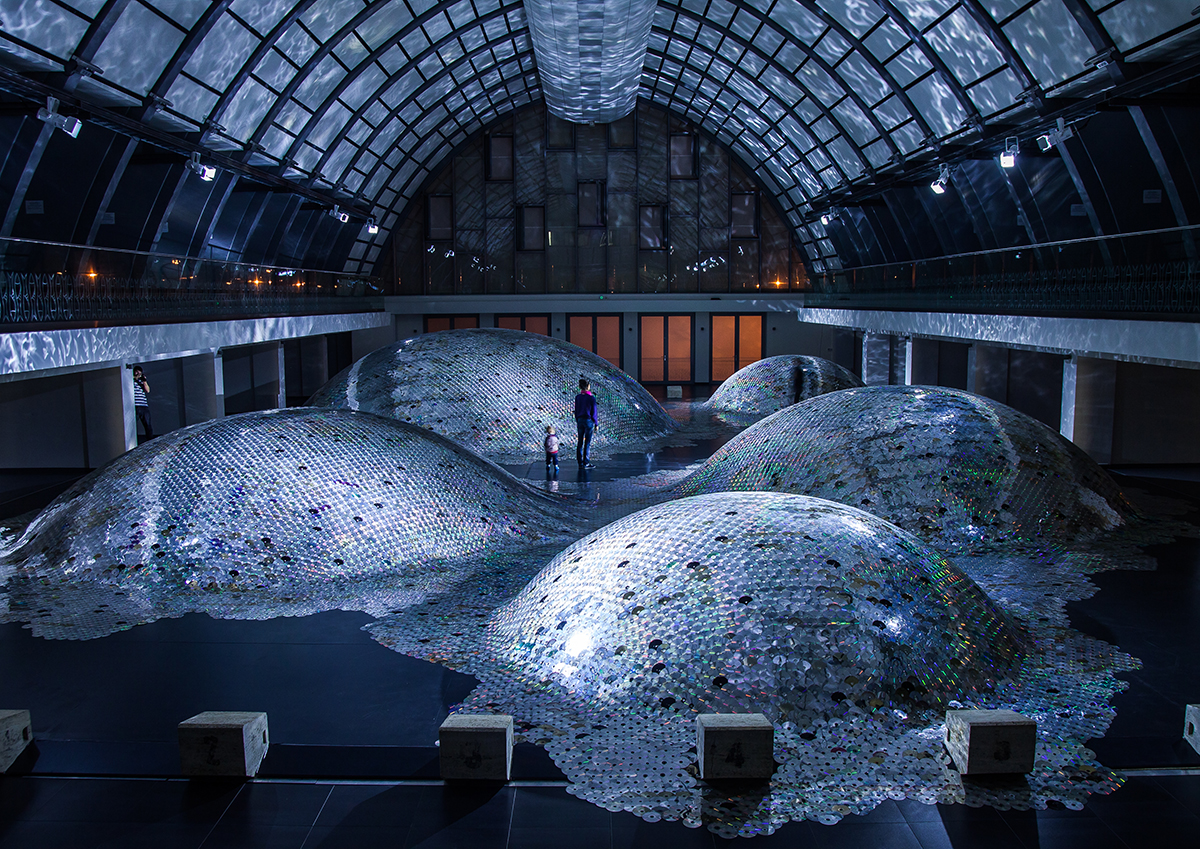Junk Yard Beauty: Elise Morin’s Waste Landscape #4
/Snapshot: Artist Elise Morin weaves together a rolling landscape made of 60,000 CDs in order to illuminate modern day waste.
Elise Morin’s Waste Landscape is part of an international festival of contemporary art called the White Night Kośice. The installation is part of a four-part collaboration between Morin and curator Zuzana Pacáková. This invented landscape was created as a thoughtful representation of the economical displacement of objects in our current society. It works to illuminate our cultural sensitization to our expanding environmental crisis.
The artwork, which covers 500 square meters, is made of 60,000 hand-sewn unsold or collected CDs. Waste Landscape is currently housed in Kunsthalie Košice, which in 2013 became the first hall of contemporary art in Slovakia. Upon seeing the space, Elise and her team immediately knew that the atypical cupola design and the arched architecture of the space would help to create the feeling of boundlessness that she needed for her installation.
Given the four walls of space that the piece resides in, there is a literal restriction to how big the piece can actually become. However, through the innovative use of lighting and music, the hills of Morin’s Waste Landscape undulate endlessly between what is infinitely small and enormous.
In lighting the installation, Elise collaborated with Showmedia light studio in order to create a dramatic but almost natural effect on the mirrored landscape of the CDs. The lights used are some of the most modern LED devices created to date. As for the music, that was created in collaboration with Jozef Vik, a successful and acclaimed musician/performer in the Slovak scene.
Eventually, Waste Landscape will be recycled into polycarbonate and reused. Unlike so many other pieces of modern technology come and gone, these 60,000 CDs will not be banished to the ever-increasing piles of waste. Through the repetition of motif and material, Elise Morin has succeeded in creating a minimalist work that helps to reconsider the modern world in which we live.
Photography courtesy of Elise Morin
